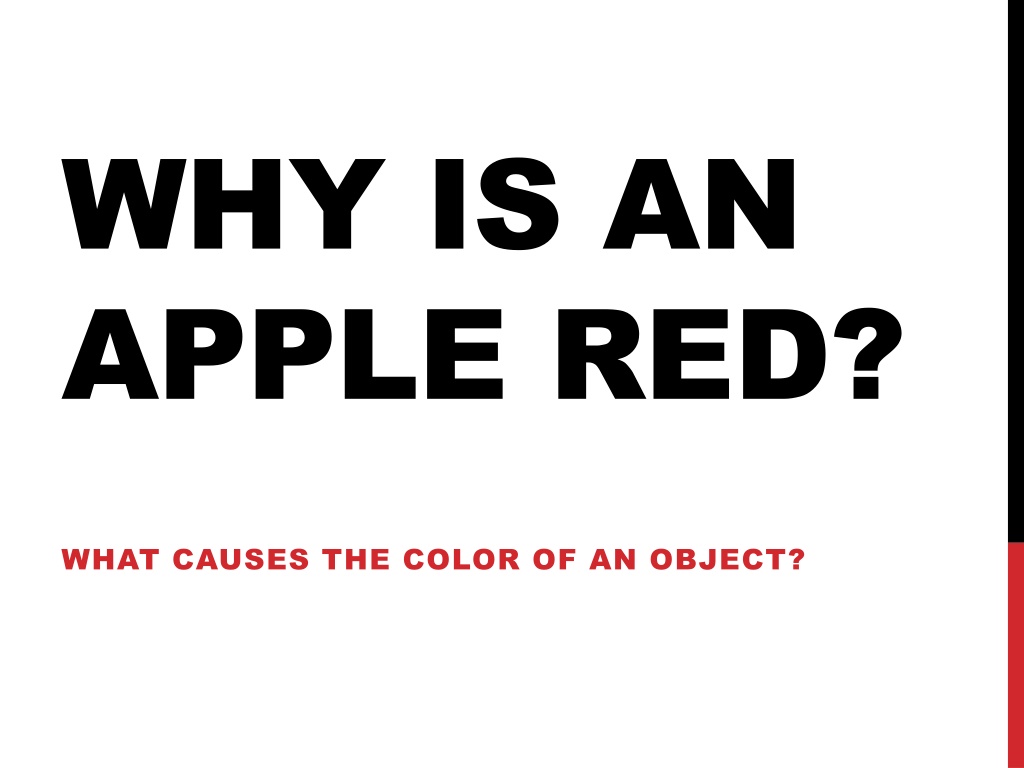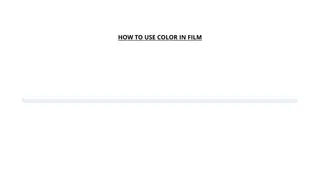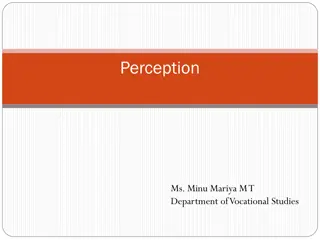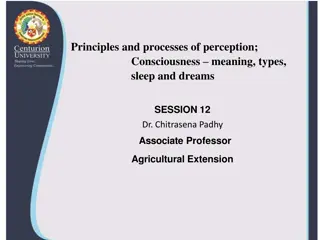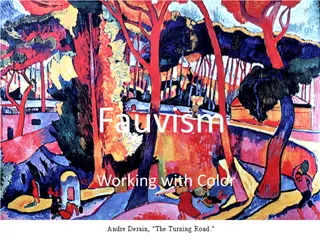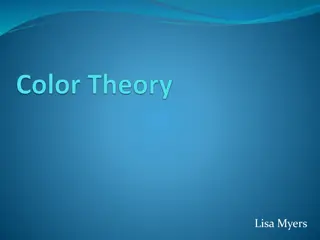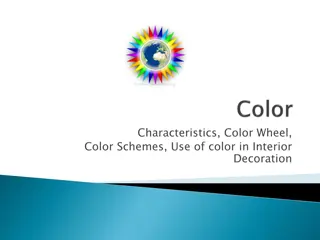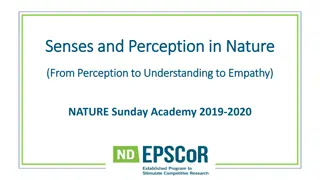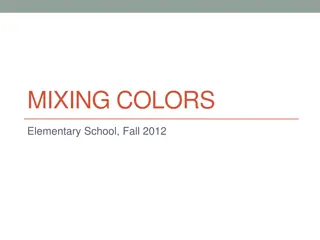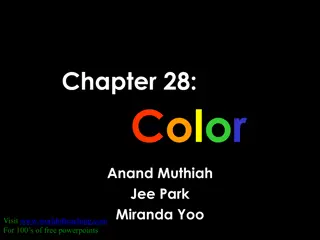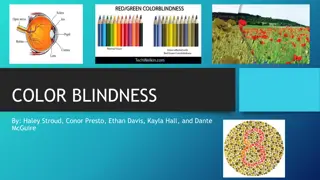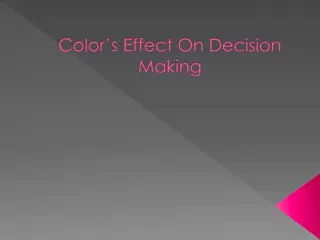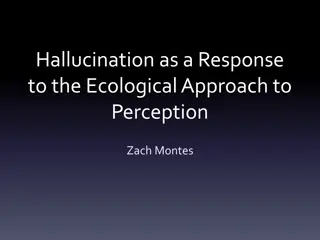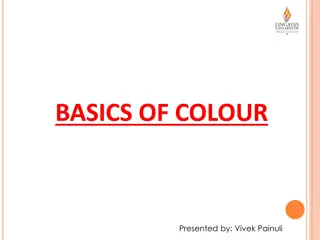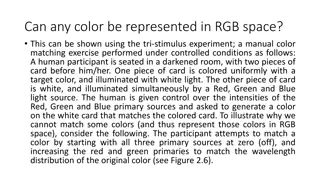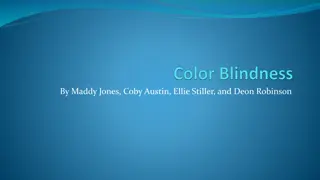Understanding the Science of Color Perception
Objects appear colored due to selective reflection of light wavelengths - some are absorbed, and the rest are reflected. The eye's complex structure, including the cornea, iris, pupil, lens, and retina, plays a crucial role in perceiving color. Color blindness results from missing cone cells in the retina. Filters selectively transmit certain wavelengths, allowing only specific colors to be seen. Exploring color perception through filters enhances understanding of how various colors are perceived.
Download Presentation

Please find below an Image/Link to download the presentation.
The content on the website is provided AS IS for your information and personal use only. It may not be sold, licensed, or shared on other websites without obtaining consent from the author. Download presentation by click this link. If you encounter any issues during the download, it is possible that the publisher has removed the file from their server.
E N D
Presentation Transcript
WHY IS AN APPLE RED? WHAT CAUSES THE COLOR OF AN OBJECT?
INTRODUCTION INTRODUCTION - - WHAT CAUSES THE COLOR OF AN CAUSES THE COLOR OF AN OBJECT? OBJECT? We see most objects because light bounces off them and then travels to our eyes. This is called reflection. Ask students if they can name some objects that reflect ALL of the light that reaches them. A mirror, calm water, shiny aluminum pan Most objects only let some colors of light bounce off of them. When white light hits an object, some wavelengths are absorbed by the object, and other wavelengths are reflected or transmitted. The eye sees only wavelengths that are not absorbed. For example, a piece of blue paper appears blue because only the blue wavelengths are reflected back to your eye, and all the other wavelengths in white light are absorbed. WHAT
THE EYE External eye muscles -The eye has voluntary muscles like any other muscle in the body that are used to move the eye around. This is how you look from side to side and up and down. Cornea - This protects the iris and other internal structures. Iris - The iris is the muscle that controls the size of the pupil (and therefore how much light enters the eye); this is the colored part of the eye. The iris alters the diameter of the pupil to adjust for varying light conditions. Pupil -The pupil is the hole where light enters the eye. It is the small, black circle in the center of your eye. The pupil can change size depending on how much light is present. Lens - of the lens is what causes light to focus properly. Retina -The retina is the back part of the eye where there are special cells called rods and cones that sense light and send signals to the brain via nerves.
COLOR BLINDNESS Individuals are said to be color-blind when a single group of cone cells is missing from the retina. The most common type of this form of color blindness is red-green color blindness, where the cones most receptive to both red light and green light are missing from the eye.
SHINING LASERS THROUGH FILTERS The red filter appears red because it transmits only red wavelengths, and absorbs all others, (including green wavelengths). Therefore, the red laser light passes through this filter, but the green laser light does not. The green filter appears green because it transmits only green wavelengths and absorbs all others, including red wavelengths. Therefore the green laser light passes through, but the red laser light does not. No Filter Red Filter Green Filter
LOOKING THROUGH COLOR FILTERS Tell students to look at the red- colored block. Ask them to explain why they see red? Red is the only color reflected back to their eyes. All other colors are absorbed. Now view the block through the green filters. Ask them to explain what they see? The red color will appear white or very light colored through the red filter and dark thru the green filter.
CREATING COLOR FILTER CODES Tell students to look at Handout #2 on the flip side. Tell them to look at the words through the red filter. Tell them they can now try to make their own secret color code. They can color the codes provided, or create their own. If they create their own, tell them to: Choose the colors that will show up dark when looked through the red filter. Red filter choose blue, green or purple. Draw an object or a word with the chosen colors. Make it simple. Use the other color markers to make a mosaic pattern or extra lettering over the writing to camouflage or disguise it. Draw many shapes around your object/word and color them with pens that will be white or pale when looked through your filter. Test their codes. See next slide.
No Filter RedFilter
